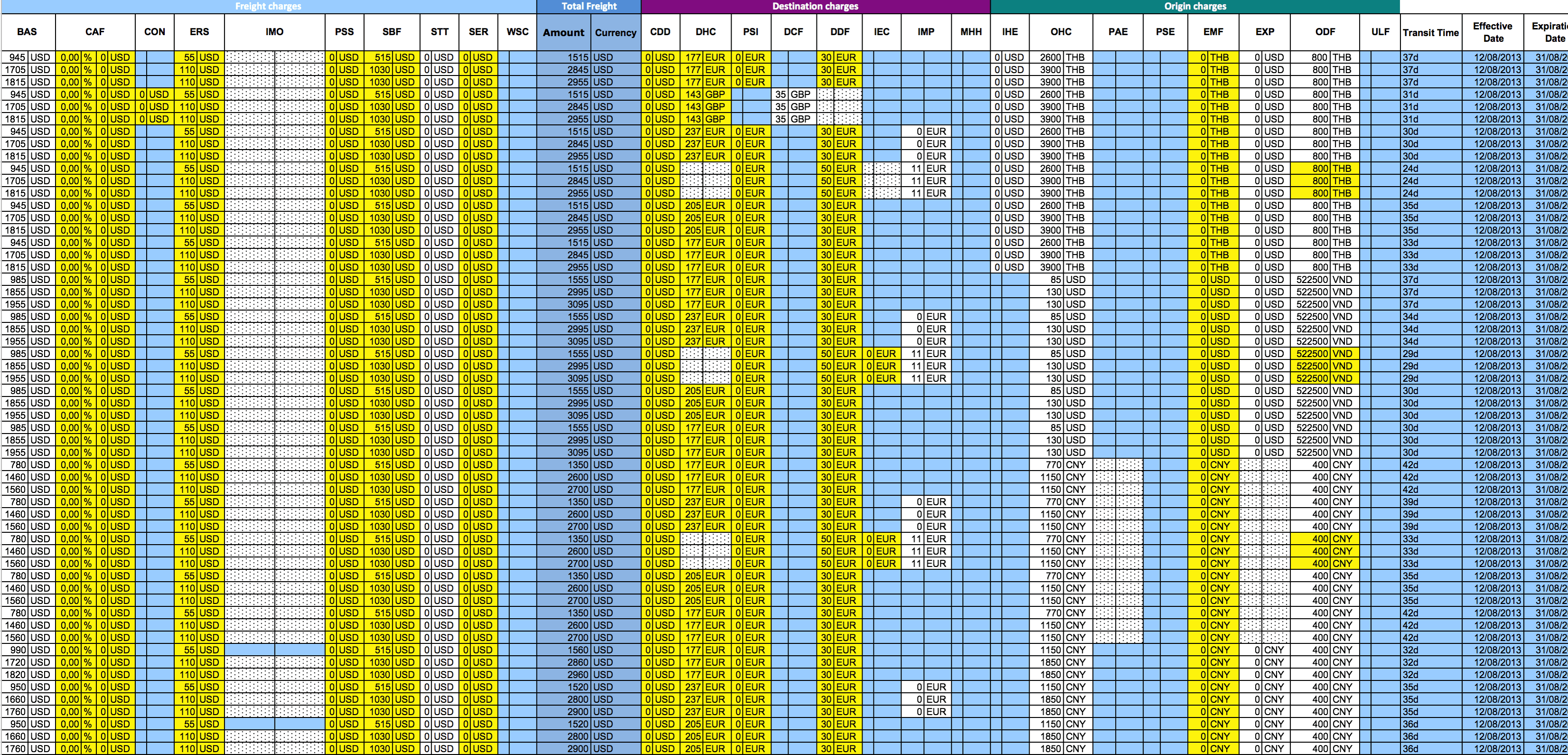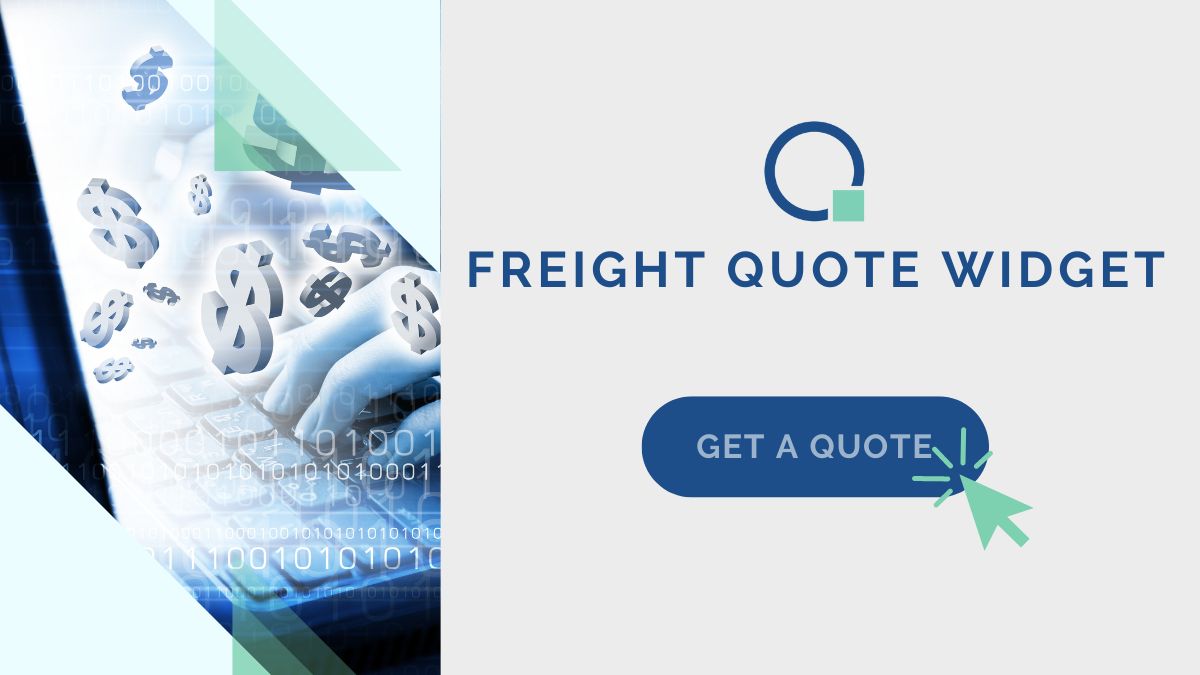by Marcin Zarzecki, CEO of Quotiss
This is the second part of the article, which covers the numerous errors in freight ratesheets distributed by the shipping lines. In the first article, I illustrated that there is a clear lack of unified standards across the carriers. Even within the same shipping company different offices use different formats when it comes to preparation and distribution of the freight ratesheets.
In this post, I will dig deeper into the discrepancies we’ve witnessed during our freight simplification journey at Quotiss. I will not give the names of the carriers for obvious reasons, but I can assure you that there is no single carrier in the world that has their rates structured to the optimal level.
So far, we’ve covered the most common discrepancies:
-
Rate structure
-
Delivery method
-
Local exceptions
Now let’s look at other examples when things go bad because of the lack of standardization and proper tools.
Inconsistency in Location Names
Shanghai is one of the biggest ports in China and in the whole of Far East Asia. Shanghai port is included in the rotation of all major shipping lines.
When you look for Shanghai in a freight ratesheet, you can see the following variations of its name: “Shanghai”, “Shanghai, CN”, “Shanghai, China”, “CNSGH”, “CNSHA” or even “China Main Ports” which sometimes is shortened to ‘CMP’ or ‘ECMP’ (for East China). These names are not commonly provided as a standard unified code (UNLOCODE).
The same carrier can use different abbreviations for the same port. We also witnessed the situation, where the carrier had one set of NCMP (North China Main Ports) in one contract and another set of NCMP in the other contract. Both contracts were sent to the same freight forwarder within the same week!
Inconsistency in Freight Surcharges
Freight rates consist of basic freight (BAS) and freight surcharges. Some freight surcharges are already included into BAS and some are excluded (quoted separately). There is no regulation of including or excluding freight surcharges and it can vary across the same carrier contract.
For example, in week 1, the bunker surcharge can be included in the basic freight rate. In week 2, the bunker surcharge is given as a separate freight surcharge. In week 3, the bunker surcharge is again included into the basic freight rate. This is common practice.
Obviously, there is no unified naming convention for the surcharges. For example, bunker surcharge can be abbreviated as BAF, SBF, or BUC. Low sulfur surcharge can be called LSS, LSF, or ECA – depending on the carrier you use.
Inconsistency in the Outport Rates
Many shipping lines provide the main port rates and attach a separate table with the outport additionals. For example, BAS for Shanghai – Hamburg is 1000 USD / FFE, and Hong Kong is 50 USD / FFE on top of Shanghai, which means that BAS for Hong Kong – Hamburg is 1050 USD / FFE. When Shanghai – Hamburg rate changes, Hong Kong additional remains the same – 50 USD / FFE on top of Shanghai. This is a relatively easy way to present the rates, as statistically, main port rates change more often, than outport additionals. This makes a lot of sense, and it saves time and resources on the rate reprocessing.
But we’ve seen freight ratesheets with all-in main port rates and a separate page with all-in rates for the outports. There is no logical commercial explanation for this – just a clear lack of proper tools.
Consequences
All these inconsistencies are both the cause and effect of the broken shipping process. They make it impossible to digitize pricing and bring the quoting online.
- Shipping lines waste time and resources on sending bulky freight ratesheets and struggle with invoice quality, losing millions on internal inefficiencies;
- Freight forwarders receive hundreds of freight ratesheets in unstructured and inconsistent formats, waste their time processing the data and struggle with the invoice quality;
- Shippers wait for freight quotes for hours and deal with the inconsistencies in the formats.
Some industry players vote against displaying freight rates online, as it may start the price wars and drive the margins down. Commercially valid reason. But still, there is no logical explanation for the mess in the pricing of the shipping lines.
What about the freight marketplace, where a client can compare the rates of different carriers and book his freight online automatically with the selected provider? What about digital freight forwarders, who promise a fully automated service from A to Z?
Any automation must start with the standardization. In the case of container shipping, it must start with the simplification.
We believe that until all shipping lines agree to use the same port naming convention, unify trade and port surcharge structure, and agree on the way the rates are presented and distributed to the client, it will be very difficult to build a platform to compare shipping rates online.
Once the pricing is simplified, the quoting can be dramatically improved, as we do it in Quotiss.
Click here to register online. We’ll activate your company’s profile and help with the initial settings and user onboarding. You can start uploading your freight ratesheets and quoting freight instantly on the same day we sign the deal.



